Surely, if you’re a beginner, you might not have heard of this route, but for those who love the Camino de Santiago, it’s one of the most magical Jacobean routes. This Camino Olvidado was the most important route to Santiago in the 12th century and was known as “The Mountain Way.” Today, it’s known as the Camino Olvidado and starts in Bilbao.
The history of this route dates back to the 9th to 12th centuries, during the Spanish Reconquista of lands invaded by the Moors. Continuous wars and conflicts made pilgrims fearful of the dangers. On top of that, the coastal route was tough, so they sought out a safer alternative. This became the Mountain Way, which crossed the Pyrenean or Cantabrian range to reach a lower mountain area and continued along a medium-difficulty profile.
This route fell into oblivion, hence its name. After the Reconquest of the Northern Plateau, the kings of Navarre and León decided to promote a new route slightly further south. Their goal was to speed up and facilitate the movement of pilgrims and trade. This is how the now-famous French Way was promoted, leaving the old route behind and making the Old Way obsolete.
Stages of the Camino Olvidado
This Camino de Santiago route is divided into around 20 or 21 stages, covering approximately 480 kilometres. After that, there are two route options to continue toward Santiago.
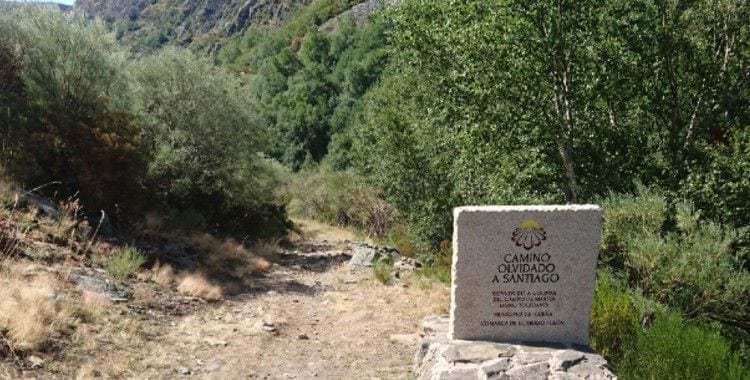
Mile marker on the Camino Olvidado to Santiago
The route starts in Bilbao and passes through towns such as Balmaseda, Espinosa de los Monteros, Arija, Aguilar de Campoo, Cervera de Pisuerga, Guardo, Cistierna, Boñar, La Robla, Cacabelos and Villafranca del Bierzo. There, it connects with the French Way and continues to Santiago. In fact, it serves as a link between the Northern Way and the French route. As mentioned earlier, once the forgotten route is completed, there are two options to continue: either via the French Way from Villafranca del Bierzo or from Ponferrada by taking the Winter Way.
There’s also a version of the Camino Olvidado that doesn’t start in Bilbao, but rather in Pamplona. It passes through Alsasua, Salvatierra, Vitoria, Frías, Oña and Sedano to reach Aguilar de Campoo, and from there it continues like the route starting from Bilbao. Similarly, there are many variants within each of these itineraries.
Places with History
With every step along this old route, you’ll see incredible places on either side and dive deep into history. You’ll cross old Roman bridges and roads, once walked by Roman legions and Christian armies. This was a route used long ago by millions of pilgrims heading to Santiago, or even to Santo Toribio de Liébana (Vadinian Way) or El Salvador in Oviedo (San Salvador Way) or to Valdorria to honour St. Froilán.
Today, we can still walk this historic route and discover a rich archaeological and monumental heritage, including highlights such as:
Archaeological heritage
Some prehistoric remains have been preserved. Among them, we can mention the menhir-bridge (Reinosilla). The Roman legacy is also very present, as much of the path follows Roman roads used by legions, such as the Roman roads (Zalla, Nava de Ordunte, Burceña, Irus, Nestar, Matamorisca,…).
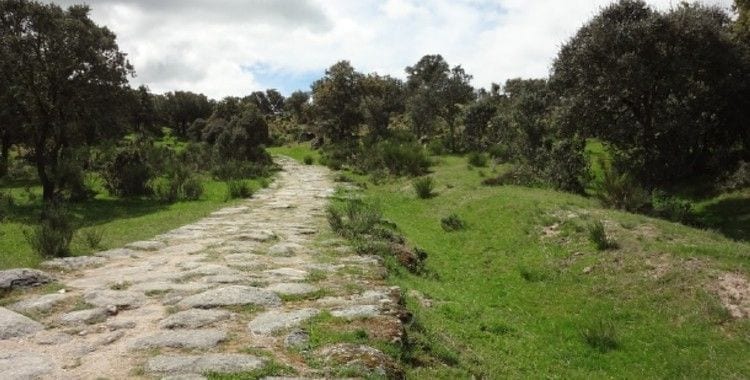
Roman road
Civil remains
Castles, towers and walls once defended territories often bordering Moorish domains. Some are now ruins, while others have been restored with different purposes. Along this Camino, you’ll see towers like the Torre de Renovales (Güenes), the Torre de Terreros (Zalla) or castles like La Robla Castle (Los Alba).
Rivers were always a major challenge for pilgrims, so safe bridges determined the course of some sections, such as: Güenes, Puente Almuhey, Puente Viejo (Boñar), and Puente Mayor and Portazgo (Aguilar de Campoo).
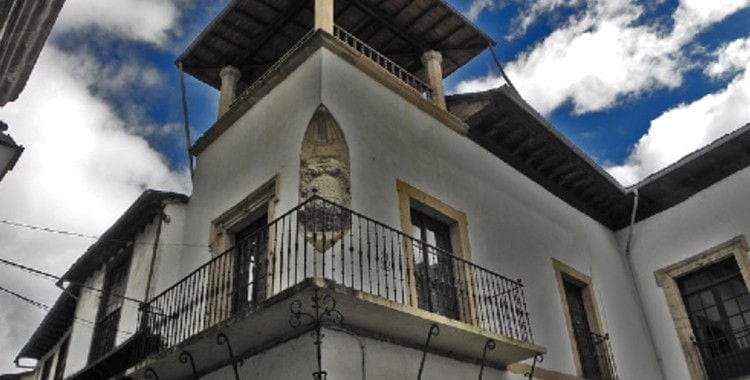
Architecture along the Camino Olvidado to Santiago
The nobility living in regional capitals displayed their prestige with grand buildings such as palaces and manor houses. Examples include the Cuadra Salcedo Palace (Güeñes), the Horcasitas Palace (Balmaseda), and the Palaces of Torquemada and the Toledos (Villafranca del Bierzo), among others.
Religious remains
Along this route, you’ll find Romanesque-style churches such as Santiago Apóstol (Quisicedo), Villafría Church (Retortillo), Santa Cecilia (Aguilar de Campoo), and the Monastery of Santa María la Real (Aguilar de Campoo).
Gothic influence also left its mark on the Mountain Way. Notable examples include Santiago Cathedral (Bilbao), the altarpiece of San Nicolás (Espinosa de los Monteros), the Church of the Assumption (Pisón de Castrejón), and others.
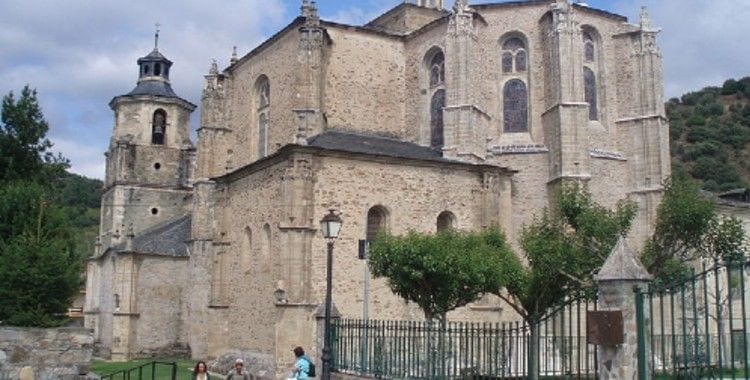
Religious architecture on the Camino Olvidado to Santiago
The Renaissance also left behind some noteworthy examples, such as the Tower of the Collegiate Church of St. Michael (Aguilar de Campoo), the Herrerian altarpiece of the Hermitage of Celada (La Robla), and the Collegiate Church of Santa María (Villafranca del Bierzo).
Lastly, the Baroque era enriched the artistic heritage of this route with works like the Sanctuary of Our Lady of Pandorado, the Tower of the Church of St. John and St. Severinus (Balmaseda), and the Hermitage of the Cross (Cervera de Pisuerga), among others.
The Camino steps out of oblivion…
Today, various Friends of the Camino associations are working to recover this route. In fact, a recent change was made to the connection point with the French Way. Its signposting is still basic, the infrastructure is tricky, and services are limited: there are few pilgrim hostels, although the number of rural guesthouses has grown significantly.
More and more pilgrims are choosing to walk this route. The Old Way offers peace and tranquillity, helping us reconnect with ourselves and walk in the footsteps of history—an incredible journey through these villages, following ancient trails to discover places of unique beauty.
“`

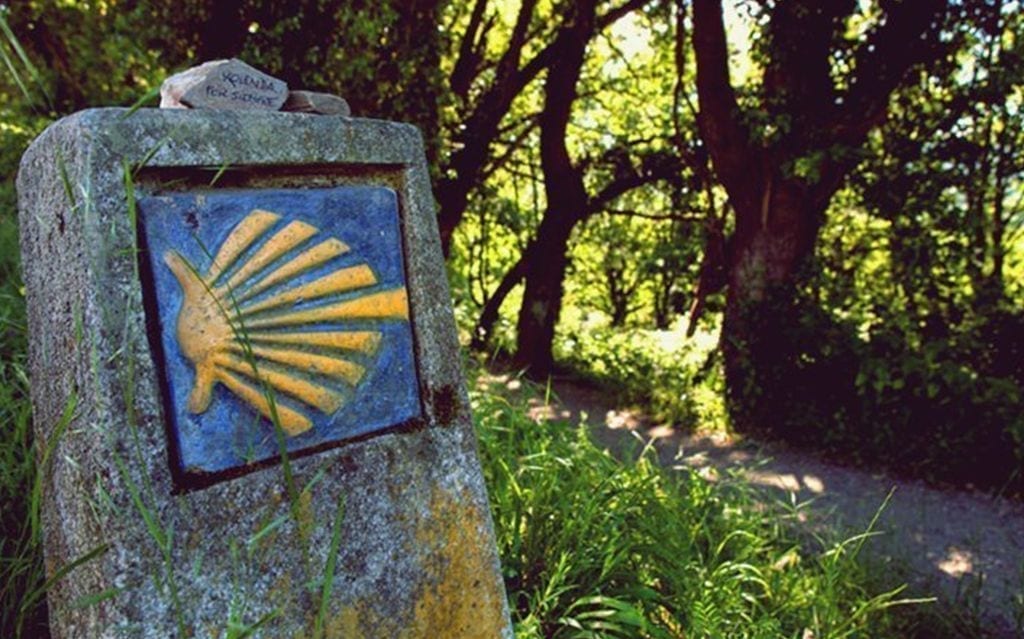










Leave A Comment